Fermenting Beer with Fermentis SafBrew HA-18 Yeast
Published: August 16, 2025 at 8:42:15 PM UTC
Last updated: November 27, 2025 at 3:23:02 PM UTC
Fermentis SafBrew HA-18 Yeast is a unique blend for high-gravity and very high alcohol beers. It combines Saccharomyces cerevisiae with glucoamylase from Aspergillus niger. This combination helps in converting complex sugars, pushing the limits of strong ales, barleywines, and barrel-aged brews.
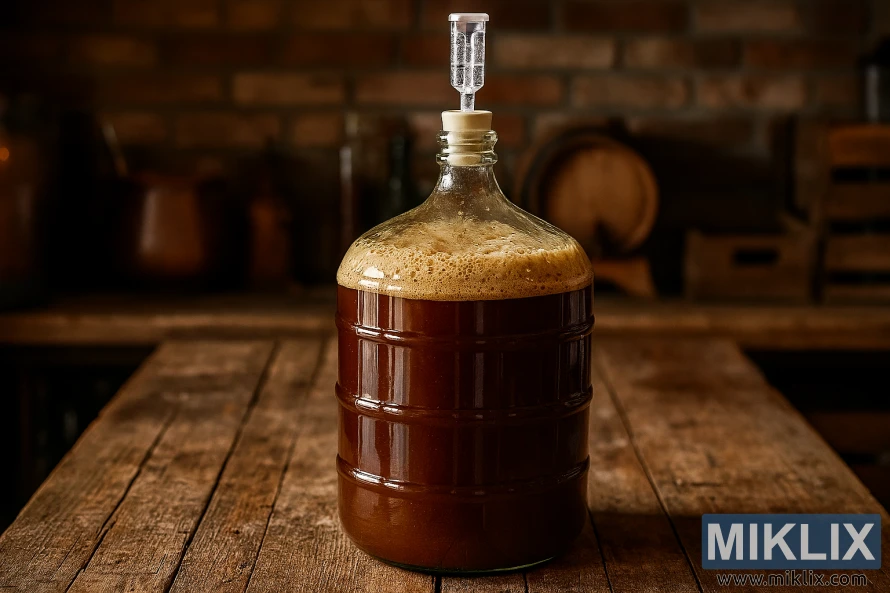
The yeast comes in 25 g and 500 g packages, with a 36-month shelf life from production. It's essential to store the sachets under 24°C for short periods and below 15°C for longer storage. Once opened, packs must be sealed, refrigerated at 4°C (39°F), and used within seven days.
Fermentis, part of the Lesaffre Group, ensures SafBrew HA-18 meets strict production standards. This guarantees purity and robust fermentation activity. Brewers rely on this high-gravity yeast for extra-dry, high-alcohol, or Brett blending applications.
Key Takeaways
- SafBrew HA-18 is a combined yeast and enzyme blend for very high gravity beers.
- Available in 25 g and 500 g packaging with a 36-month shelf life.
- Store cool; opened sachets require refrigeration and quick use.
- Developed by Fermentis (Lesaffre Group) for purity and consistent activity.
- Ideal for strong ales, barleywines, barrel-aged, and other high-alcohol styles.
Overview of Fermentis SafBrew HA-18 Yeast
Fermentis SafBrew HA-18 is a high-attenuation, alcohol-tolerant active dry brewer's yeast. It combines Saccharomyces cerevisiae with maltodextrin and a glucoamylase enzyme from Aspergillus niger. The emulsifier E491 (sorbitan monostearate) is also included. This blend aims to streamline high-gravity fermentations.
Technical specifications reveal a viable yeast count exceeding 1.0 × 10^10 cfu/g. The apparent attenuation is around 98–102%, with a medium sedimentation time. The yeast is POF+ and designed for very high alcohol environments, ideal for extended fermentation periods.
Target brewers include those crafting strong ales, barleywines, and barrel-aged beers. These recipes require extra attenuation and higher ABV. The yeast's thermotolerant nature allows for trials at warmer temperatures without immediate activity loss, which can enhance certain brewing processes.
It is advised to conduct laboratory or pilot fermentations before widespread use. Small-scale trials are essential to verify performance in specific worts, mash profiles, and temperature ranges. This approach minimizes risks when scaling up to commercial batches.
- Composition: active dry yeast, maltodextrin, glucoamylase (EC 3.2.1.3), emulsifier E491.
- Key measures: >1.0 × 10^10 cfu/g, 98–102% apparent attenuation, POF+.
- Applications: high-gravity beers, barrel projects, strong ales, high-ABV formulations.
- Lab advice: pilot fermentations recommended to confirm behavior.
Sensory Profile and Flavor Impact
The SafBrew HA-18 sensory profile is characterized by robust, fruity aromas. This is due to its high ester production. Brewers will find bright, complex fruit esters that stand out from neutral strains.
Its POF+ character also introduces clear phenolic notes. These phenolics manifest as a warm, clove flavor. This adds spice and depth to strong ales.
In high-gravity worts, ester production and phenolic notes intensify. This results in a more pronounced flavor impact in high ABV beers. The finish is dryer, with concentrated fruit and spice.
Consider SafBrew HA-18 for Belgian and English strong ales or barrel-aged beers. Its bold yeast character complements oak and malt complexity. This creates layered sensory profiles.
On the other hand, avoid it for beers needing a neutral backdrop. This includes classic lagers or clean West Coast-style ales. The ester production and phenolic notes might overshadow delicate hop and malt nuances.
Practical tuning, such as temperature, oxygen, and pitch rate, allows brewers to shape the ester production and phenolic notes. With careful control, the clove flavor can be tempered. This preserves the aromatic punch that defines SafBrew HA-18.
Fermentation Performance and Technical Features
Fermentis SafBrew HA-18 exhibits outstanding fermentation performance in trials. Brewers achieve apparent attenuation of 98–102%, resulting in extremely dry, low-sugar beers. This is possible when fermentable wort is available.
The yeast strain is thermotolerant, with excellent osmotic resistance. This makes it ideal for high-gravity worts and warm fermentations between 25°C–35°C (77°F–95°F).
Fermentation kinetics are strong from the beginning. The product maintains high viability (>1.0 × 10^10 cfu/g) after drying. This ensures active sugar conversion and consistent alcohol production in typical commercial pitches.
- Apparent attenuation 98–102% delivers very dry final gravity.
- Thermotolerant yeast performance helps in warm or high-Brix fermentations.
- Medium sedimentation time means moderate flocculation; conditioning may be needed for clarity.
Lab trials by Fermentis assess alcohol yield, residual sugars, flocculation, and fermentation kinetics. Brewers should replicate these tests at their scale. This confirms the yeast's behavior in their recipes and equipment.
Practical handling notes: pitch at the recommended temperature window, maintain adequate oxygenation for yeast health, and allow post-fermentation conditioning. These steps optimize fermentation performance SafBrew HA-18 and preserve the expected apparent attenuation 98–102% documented in technical data.
Dosage, Pitching, and Rehydration Best Practices
For most ales, use 100–160 g/hl of SafBrew HA-18. This dosage supports clean attenuation and strong fermentation across various wort gravities. For high-gravity batches, aim for the upper end to avoid stuck fermentation.
Direct pitching is effective when the fermentor is at fermentation temperature. Ensure the yeast is pitched into a 25°C–35°C (77–95°F) environment. This temperature range promotes rapid activity without shocking the yeast cells.
Rehydration requires sterile water or cooled wort, equal to 10× the dry yeast weight. Use a rehydration temperature of 25°C to 37°C (77–98.6°F). Let the yeast rest for 15 minutes, then stir gently before adding to the fermentor. Follow these steps to protect cell membranes and preserve viability.
Yeast handling begins with checking unopened sachets for the best-before date. Avoid soft or damaged pouches. If a sachet is opened, reseal and refrigerate at 4°C, and use within seven days. Proper yeast handling minimizes contamination and preserves the high viable cell count Fermentis guarantees.
- Target viable cell count: >1.0 × 10^10 cfu/g for robust fermentations.
- For direct pitch: ensure fermentor temperature is stable at 25°C–35°C before pitching.
- For rehydration: use 10× weight volume, rest 15 minutes, then stir gently.
- Storage: unopened until use; opened sachets refrigerated at 4°C and used within seven days.
Following these guidelines ensures proper pitching rate, rehydration, dosage, and yeast handling. This adherence shortens lag time, improves attenuation, and preserves flavor integrity.
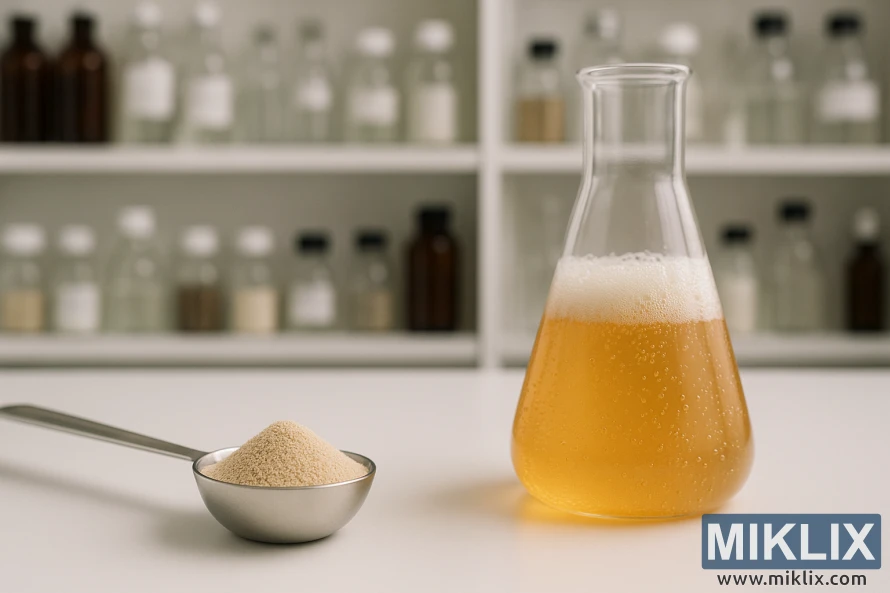
Enzyme Activity and Its Role in High-Gravity Fermentation
Glucoamylase SafBrew HA-18, derived from Aspergillus niger, is part of the All‑In‑1™ formulation. It breaks down complex dextrins into simpler sugars. This enzyme activity enhances yeast's ability to access fermentable substrates, leading to higher attenuation in complex worts.
In high-gravity brewing, glucoamylase SafBrew HA-18's starch conversion reduces residual dextrins. This results in drier beers and higher alcohol content. The synergy between enzyme activity and yeast performance is key to achieving these outcomes.
The practical effects of strong starch conversion and high-gravity attenuation are notable. Beers tend to have a leaner body. To achieve a rounder finish, brewers might adjust mash bills, add unfermentable dextrins, or consider gentle back-sweetening.
Temperature and osmotic stress influence the enzyme's performance. Glucoamylase SafBrew HA-18 remains effective within recommended fermentation temperatures. It also aids yeast in handling high-gravity conditions. Ensuring the fermentation temperature aligns with yeast guidelines is essential for consistent starch conversion and attenuation.
- Functional benefit: increased attenuation and very dry finish due to targeted enzyme activity.
- Process implication: lower residual sugar and higher ABV require recipe tweaks for balance.
- Operational tip: monitor gravity closely to confirm starch conversion and final attenuation targets.
Sanitation, Purity, and Microbiological Specifications
Brewers depend on strict microbiological standards to safeguard batch quality. Fermentis ensures SafBrew HA-18 purity exceeds 99.9%. It also guarantees viable yeast counts above 1.0 × 10^10 cfu/g. These criteria enable breweries to evaluate yeast quality and plan sanitation protocols before adding it to the fermentation process.
The limits for microbial contamination are stringent and quantifiable. Fermentis sets a threshold for lactic acid bacteria, acetic acid bacteria, Pediococcus, and wild yeast at less than 1 cfu per 10^7 yeast cells. Total bacteria are restricted to under 5 cfu per 10^7 yeast cells. Laboratories employing EBC or ASBC methods can swiftly confirm these standards.
Pathogen control adheres to both regulatory and industry guidelines. Regular testing for common contaminants minimizes risks. Adherence to good manufacturing practices during drying and packaging further supports the microbiological specifications.
Effective yeast storage is critical to minimize contamination risks and maintain performance. Store unopened sachets at recommended temperatures and avoid any signs of damage. Adhere to strict hygiene practices when handling to prevent secondary contamination after opening.
Practical measures are essential to maintain contamination limits in the cellar:
- Sanitize all transfer lines and vessels before adding yeast.
- Use sterile tools when sampling rehydrated yeast.
- Monitor storage temperatures and rotate stock by first-in, first-out.
- Document lot numbers and test results for traceability.
Following these practices ensures SafBrew HA-18 purity is maintained throughout storage and use. Clear specifications and meticulous yeast storage help avoid unexpected issues and support consistent fermentation outcomes.
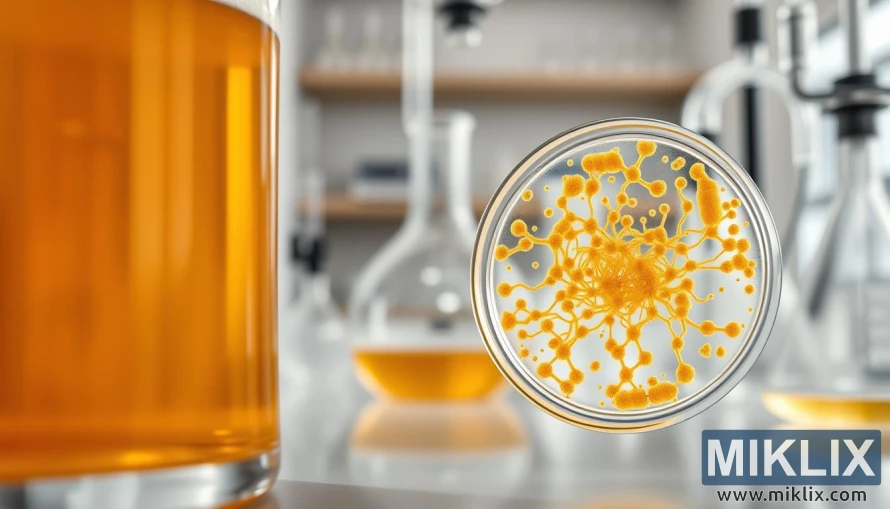
Practical Brewing Recipes and Formulation Tips
Begin by setting clear objectives for your recipe: aim for a specific alcohol content, desired mouthfeel, and a plan for aging. For recipes targeting very high ABV with SafBrew HA-18, a robust grain bill is essential. This supports prolonged fermentation and conditioning. Always conduct a small pilot batch to ensure proper attenuation and flavor before scaling up.
To craft a high-gravity beer, balance fermentable malt with dextrin sources. Incorporate Munich, crystal, or CaraMunich malts in small amounts to maintain body. For a drier finish, increase base malt or implement a step mash to enhance sugar conversion.
In barleywine formulation, limit dark crystal malts to avoid harshness. Mash at a slightly warmer temperature or include 5–8% dextrin malt to preserve body. Expect the yeast's high attenuation to significantly lower gravity, so start with a higher gravity than your target to allow for the expected drop.
Follow these mash schedule tips to manage body and fermentability:
- Single infusion at 152–156°F for fuller body.
- Step mash with a short 131–140°F rest to boost dextrins, then a saccharification rest near 150–154°F for balanced fermentability.
- Extended mash or dextrin malt additions to counteract very high attenuation.
Pitching and nutrition are critical with dense worts. Use a pitching rate of 100–160 g/hl as a baseline and scale up for stronger worts. Ensure thorough oxygenation and add a measured dose of yeast nutrients, such as diammonium phosphate and complex nutrient blends, to reduce stress.
Hopping and adjunct strategies should align with the beer's aging plan. For barrel-aged beers, pair oak and vanilla adjuncts with restrained late hopping. For imperial stouts, employ late and dry hop accents to preserve roast character. Remember that esters and phenolics from SafBrew HA-18 will interact with hops and malt character.
Recipe dosages to consider in formulation:
- Pitch 100–160 g/hl; increase for worts above 1.090 OG.
- Oxygenate to recommended dissolved oxygen for yeast health on high-gravity batches.
- Add yeast nutrients according to manufacturer guidelines when gravity exceeds normal ranges.
Run pilot batches to fine-tune the balance between dryness and body. Small trials allow for adjustments to mash schedule tips, adjunct levels, and validation of high-gravity beer recipes without risking full production stock. Use tasting rounds during conditioning to set final blending or back-sweetening steps.
Document each SafBrew HA-18 recipes trial variation. Track mash rests, pitching rates, nutrient additions, and conditioning time. This record will help reproduce successful barleywine formulation and scale the process with confidence.
Fermentation Management and Troubleshooting
High-gravity worts can create osmotic stress, slowing yeast activity. For batches using Fermentis SafBrew HA-18, a robust pitching rate and thorough oxygenation before pitching are essential. This reduces the risk of stuck fermentation.
Temperature monitoring is critical. Keep fermentation within the 25–35°C range recommended by the manufacturer. HA-18 can tolerate warmer conditions, but watch for signs of stressed yeast. These include long lag phases or off-aromas.
Implement a clear nutrient and oxygen strategy for heavy worts. Pre-oxygenate the cooled wort and add a complete yeast nutrient. For extreme gravities, stagger nutrient additions or use phased oxygenation during the first hours. This supports yeast health.
If fermentation slows, follow a stepwise remediation plan. First, check specific gravity and recent temperature history. Do not add oxygen once active fermentation is underway. Raise temperature toward the upper recommended limit and gently rouse settled yeast.
When rousing and temperature adjustments fail, consider adding a fresh active starter of a compatible ale yeast. Add a measured dose of nutrient and gently mix to distribute yeast without excessive aeration. These moves often restart attenuation without creating off-flavors.
Managing phenolics is key when working with a POF+ strain like HA-18. If clove-like spice is unwanted, run small blending trials with a neutral strain or test alternative yeast choices before scaling up a recipe.
Keep a checklist to prevent common faults. Verify original gravity, confirm oxygenation and nutrient dosing, track pitch rates, and log temperatures. Consistent records make diagnosing stuck fermentation and osmotic stress faster and more reliable.
When troubleshooting SafBrew HA-18, treat each batch as its own experiment. Small, controlled changes let you learn which adjustments improve attenuation and which affect flavor. This helps refine practices for future brews.
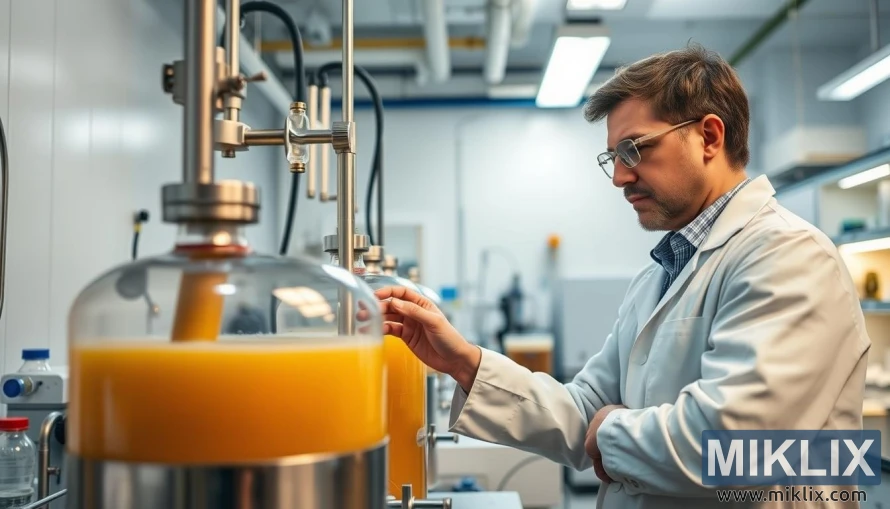
Conditioning, Maturation, and Packaging Considerations
High-ABV ales fermented with Fermentis SafBrew HA-18 require patient conditioning. Allow time for alcohol, esters, and phenolics to blend before packaging. Extended aging can soften harsh alcohol notes, leading to a more integrated mouthfeel.
HA-18 exhibits moderate flocculation and clarity. This means additional conditioning time may be necessary for natural settling. Cold crashing or extended settling can enhance appearance for bright beers.
Barrel aging is ideal for beers made with this strain. Phenolic and ester profiles complement oak and slow micro-oxygenation. Plan barrel conditioning schedules and sample periodically to track flavor development and extract balance.
Packaging high alcohol beers demands special care for stability and oxygen management. Even very dry finishes may be sensitive to oxidation. Test for oxygen pickup during transfers and choose inert purging when feasible.
- For bottle conditioning, confirm sufficient residual fermentables if secondary fermentation is intended. Near-full attenuation can limit refermentation and affect carbonation.
- For force carbonation, set conservative CO2 levels and verify absorption in high-ABV matrices.
- Follow opened sachet handling protocols through packaging to maintain yeast integrity and reduce contamination risk.
Cold stabilization, filtration, or gentle fining can speed up clarification for commercial release. Balance filtration with the desired flavor profile; removing too many particulates can strip subtle barrel- or yeast-derived notes.
Document conditioning timelines and packaging parameters. This practice helps reproduce positive results across batches and supports consistent flocculation and clarity outcomes with SafBrew HA-18 beers.
Comparisons to Other Fermentis Yeast and Competitive Strains
Brewers looking to choose between SafBrew HA-18 and other yeast strains will find significant differences. HA-18 is designed for extreme attenuation, ideal for high gravity and alcohol content beers. This makes it a standout choice for those aiming for a dry finish.
HA-18's unique features include glucoamylase and a POF+ profile, reaching up to 102% attenuation. In contrast, neutral strains like SafAle US-05 focus on clean esters and lower attenuation. This preserves more body and malt character, appealing to those who value a fuller beer.
When comparing SafBrew HA-18 to other Fermentis options, consider your goals. DW-17 is geared towards complex, dry finishes, perfect for craft beers that require layered esters. DA-16, on the other hand, aims for dryness with flavorful esters but doesn't reach HA-18's extreme attenuation.
For beers that require enzyme-assisted sugar conversion for high alcohol content or a dry finish, HA-18 is the clear choice. If you prioritize a clean yeast character, opt for a SafAle or SafLager strain. These provide a neutral canvas for your beer's flavors.
- When to pick HA-18: very high ABV, starch-heavy worts, and maximum attenuation goals.
- When to pick SafAle strains: clean profiles, sessionability, and preserved malt body.
- When to pick other SafBrew blends: balance between dryness, flavor, and complexity depending on the strain (DW-17, DA-16, LD-20, BR-8).
When selecting yeast, compare SafBrew HA-18 to your recipe and processing capabilities. Consider osmotic stress, fermentation temperature, and desired residual sugars. A detailed comparison will help avoid off-flavors and ensure you reach your target ABV without unexpected attenuation swings.
Regulatory, Labeling, and Allergen Considerations
Fermentis offers detailed technical documentation for SafBrew HA-18. It lists key components: Saccharomyces cerevisiae, maltodextrin, glucoamylase from Aspergillus niger, and emulsifier E491 (sorbitan monostearate). Brewers in the United States must disclose these ingredients when local laws or customer demands require it.
Ensure compliance with regulatory yeast standards by maintaining records. These should include microbiological testing and safety certificates. Keep certificates of analysis and batch traceability with each shipment. This supports audits and export requirements.
- Label ingredient changes when glucoamylase is present and state its source if regulations or buyers request it.
- Note processing aids and enzymes on technical sheets even when not required on the finished-product label for full transparency.
Evaluate the risk of SafBrew HA-18 allergens by assessing cross-contact in shared production lines. The main components are yeast and a fungal enzyme. Facilities handling nuts, soy, or dairy may pose secondary risks that need control and disclosure.
Follow storage and handling guidance to preserve the declared shelf-life and meet best-before labeling. Include product documentation with commercial sales and exports. This allows customers and regulators to verify ingredient labeling glucoamylase and other declarations.
Implement cleaning and segregation protocols to minimize cross-contact. This maintains the integrity of allergen statements. Train staff on documenting incidents that could affect label claims and regulatory compliance yeast obligations.
Brewer Recommendations and Real-World Use Cases
Fermentis suggests starting with pilot fermentations before scaling up. It's important to follow the packet dosing and rehydration instructions. Also, keep fermentation within the recommended temperature range for consistent results. These steps help reduce yeast stress and improve attenuation in demanding worts.
For commercial and craft brewers, HA-18 is ideal for high gravity brewing. It's best for barleywines, imperial stouts, strong English and American ales, and barrel-aged beers. These beers aim for high final ABV and a dry finish. Plan for longer primary and extended conditioning to allow esters to settle and harsh ethanol notes to mellow.
When brewing, focus on robust oxygenation at pitch and a targeted nutrient regime. Use staggered nutrient additions for high gravity worts. Monitor gravity, temperature, and yeast viability closely. This approach reduces stuck fermentations and supports a cleaner finish.
- Small-batch hobbyists: 25 g packs allow trials and recipe tweaks.
- Contract and craft breweries: 500 g or larger packs suit repeated runs.
- Blending and barrel programs: use HA-18 for high ABV bases prior to aging.
Retailers often list pack sizes and shipping thresholds. Check supplier reviews and Q&A for feedback on performance and storage life. These real-world notes help brewers match strain supply to production needs and confirm brewer recommendations SafBrew HA-18 before large purchases.
Avoid using HA-18 for styles that need a neutral yeast profile. The strain can produce noticeable esters and phenolics. These may clash with delicate lagers or pilsners. For other HA-18 use cases, pair the strain with robust malt bills and hops that complement a drier, higher-ABV character.
Where to Buy, Cost Considerations, and Support
Fermentis SafBrew HA-18 is available through Fermentis-authorized distributors, specialty brewing retailers, and many online stores in the United States. Retail product pages often include customer reviews and Q&A that help assess real-world performance before you buy SafBrew HA-18.
Packaging comes in 25g 500g yeast packs to suit hobbyists and commercial brewers. For small batches, a 25g pack is convenient. For larger runs or repeat brewing, a 500g pack lowers the cost per gram and reduces ordering frequency when you plan higher output.
To estimate expense, calculate your required dosage—typical pitching rates run 100–160 g/hl—then multiply by batch volume. Checking SafBrew HA-18 price on several reseller sites reveals variations from promotions, shipping, and local taxes.
Shipping policies differ by retailer. Some offer free shipping above a cart threshold. Always confirm shelf-life and best‑before dates at purchase, and verify cold‑chain or storage requirements with the seller to protect viability.
- Where to check: authorized distributors, brewing supply shops, online marketplaces.
- Packaging choices: 25g for single batches, 500g for production batches.
- Cost tip: compute grams needed per hectoliter to forecast cost per batch.
Fermentis provides a downloadable Fermentis technical data sheet for each strain. The Fermentis technical data sheet lists storage, handling, dosage, and fermentation characteristics. Review the document before purchase so you match yeast selection to your recipe and process.
Support resources extend beyond the data sheet. Fermentis customer support and many resellers supply brewer guides, troubleshooting tips, and contact channels for technical questions. Use these resources to confirm dosing, rehydration, and storage practices for best results.
When comparing offers, factor in SafBrew HA-18 price, shipping, and any return or freshness guarantees. That approach helps you choose the right 25g 500g yeast packs for your brewing needs while keeping cost and quality under control.
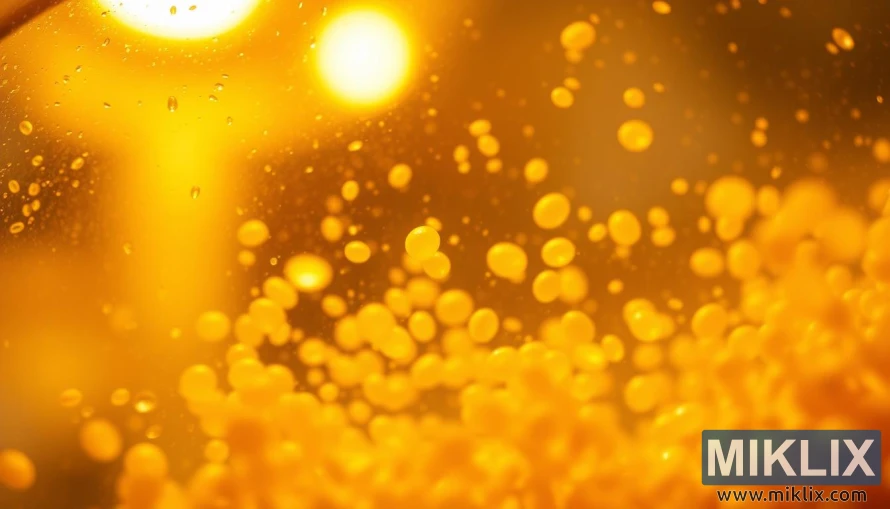
Conclusion
SafBrew HA-18 stands out as a high-gravity yeast, designed for maximum attenuation and strong flavor. Fermentis created HA-18 to convert dextrins enzymatically, achieving attenuations of 98–102%. This makes it ideal for very high ABV ales, barrel-aged beers, and styles that prefer a drier finish.
HA-18 is perfect for crafting barleywine, imperial stout, or other robust beers. It's known for its bold esters and phenolics. As the top yeast for barleywine, it offers thermotolerance and active enzyme activity. This reduces residual sweetness and boosts alcohol yield.
When using HA-18, be mindful of nutrients, oxygenation, and cell counts to avoid stuck fermentation. Start with small-scale trials and consult the Fermentis Technical Data Sheet. Refine your mash and conditioning strategies before scaling up. These steps will ensure you maximize the benefits of SafBrew HA-18 in your high-ABV projects.
Further Reading
If you enjoyed this post, you may also like these suggestions:
- Fermenting Beer with Mangrove Jack's M15 Empire Ale Yeast
- Fermenting Beer with Fermentis SafSour LP 652 Bacteria
- Fermenting Beer with Wyeast 1388 Belgian Strong Ale Yeast
